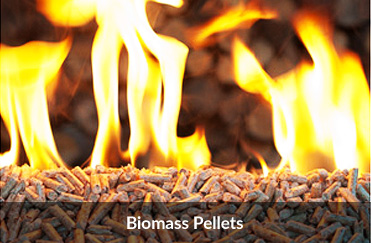In this technology biomass is being burnt in a high pressure boiler to generate steam and operate a turbine The net power cycle efficiencies that can be achieved are about 23-25%. The exhaust of the steam turbine can either be fully condensed or used partly or fully as process heat. In India the potential for power generation from agro residue (stalks, stems, straws) and agro-industrial residue (shells, husks, de-oiled cakes, etc.) is estimated about 25,000 MW. The potential for bagasse Combined Heat & Power(CHP)/Cogeneration lies mainly in the nine sugar producing States, with the maximum potential of about 1250 MW each in the State of Maharashtra and Uttar Pradesh.And in order to harness the full potential of it capacity building is required. Ministry of New & Renewable Energy is promoting a Biomass Power & Bagasse Co-generation Programme under which more than 300 project of aggregating to about 4760 MW capacity have been installed (till Dec.2015) and about 30 projects of 350 MW is under implementation. Hence in order to meet the potential technology development and capacity building need to be done.The advantages of Biomass Power, Cogeneration/CHP are higher efficiencies of the plant, higher yield, reduction in energy waste, reduction in Green House Gas emissions and other pollutants, reduce base load electricity supply, reduce primary energy cost, help in reducing carbon footprints.

A biofuel is a fuel that is produced through contemporary biological processes, such as agriculture and anaerobic digestion, rather than a fuel produced by geological processes such as those involved in the formation of fossil fuels, such as coal and petroleum, from prehistoric biological matter. Biofuels can be derived directly from plants, or indirectly from agricultural, commercial, domestic, and/or industrial wastes. Renewable biofuels generally involve contemporary carbon fixation, such as those that occur in plants or microalgae through the process of photosynthesis. Other renewable biofuels are made through the use or conversion of biomass (referring to recently living organisms, most often referring to plants or plant-derived materials). This biomass can be converted to convenient energy-containing substances in three different ways: thermal conversion, chemical conversion, and biochemical conversion. This biomass conversion can result in fuel in solid, liquid, or gas form. This new biomass can also be used directly for biofuels.
Biogas production is a clean low carbon technology for efficient management and conversion of organic wastes into clean renewable biogas and organic fertilizer source. It has the potential for leveraging sustainable livelihood development as well as tackling local (land, air and water) and global pollution. Biogas obtained by anaerobic digestion of cattle dung and other loose and leafy organic matters/ wastes can be used as energy source for cooking, lighting and other applications like refrigeration, electricity generation and transport applications.
Fossil fuels have been utilized for thousands of years. They include coal, gas, and gasoline. With time passing by, the consumption of fossil fuels is increasing sharply, so their amount is decreasing fast. And the fossil fuels are formed over thousands or even longer years of time, which makes it non-renewable. As a result, fossil fuels become extremely precious. What’s more, the burning of fossil fuels has caused severe pollution to the air, which ultimately harms human beings. Therefore, fossil fuels must be utilized in the most important and significant areas instead of being burned.
Biomass pellets are cylinder sticks made from biomass. For making both pellet and briquette, biomass raw materials should be pulverized first. The high pressure of Pellet Mill Machine can press the powdery biomass tightly and make them not easy to break.
Biomass pellets are usually utilized in home pellet stove, central heating boiler, industrial boiler, or in power plants to replace coal. They can also be used as horse bedding and cat litter.
 |
 |